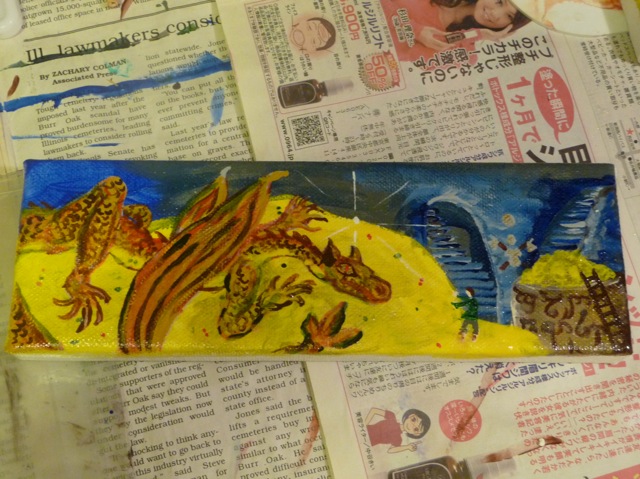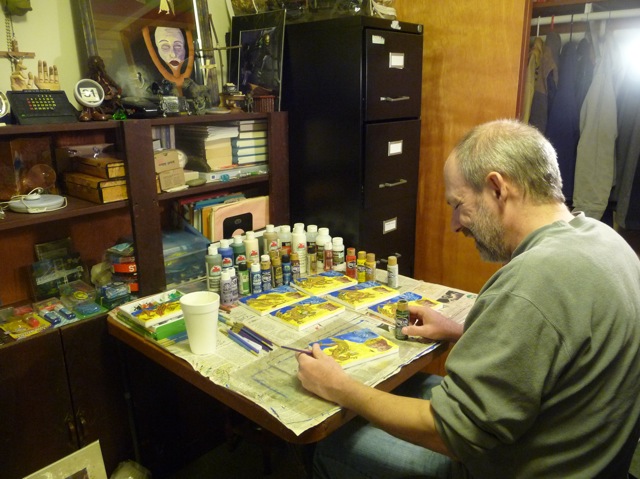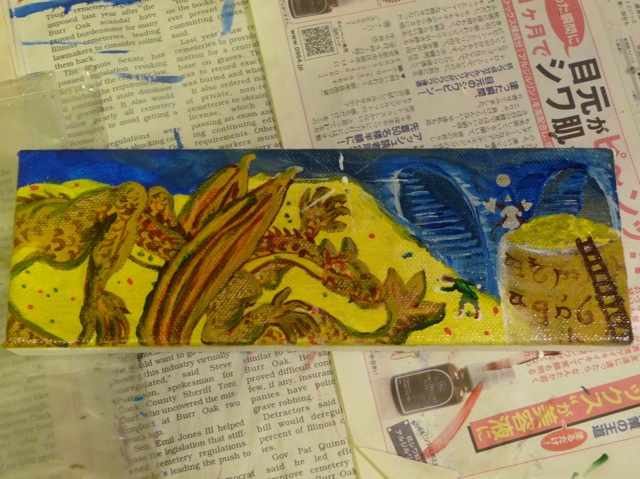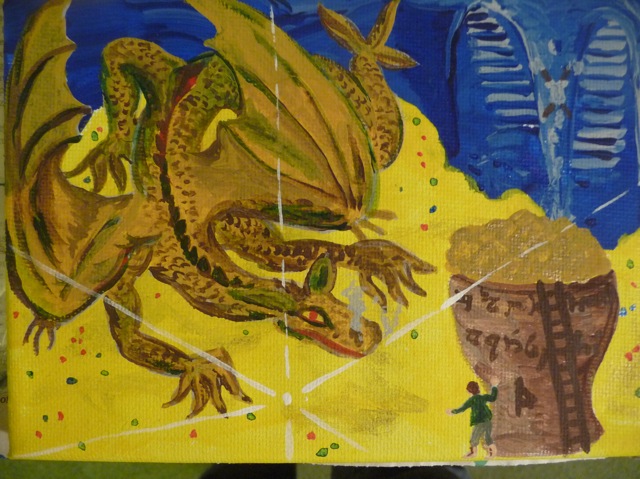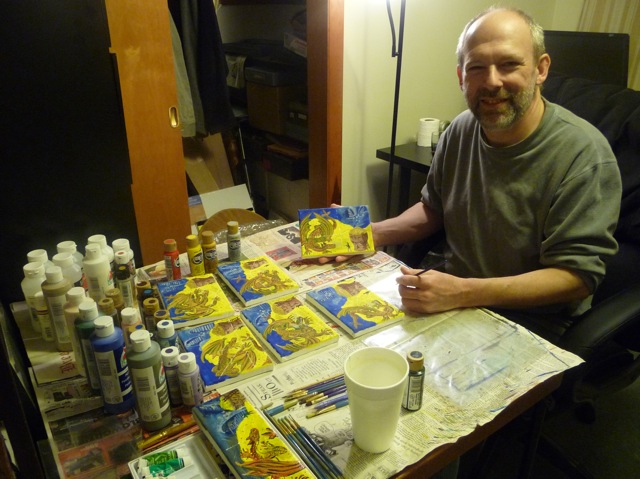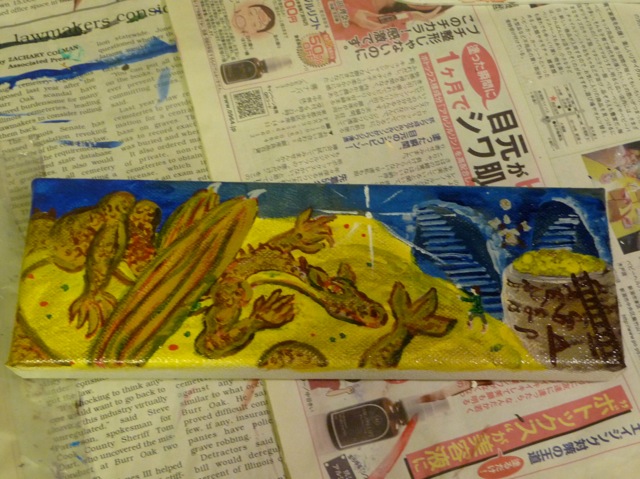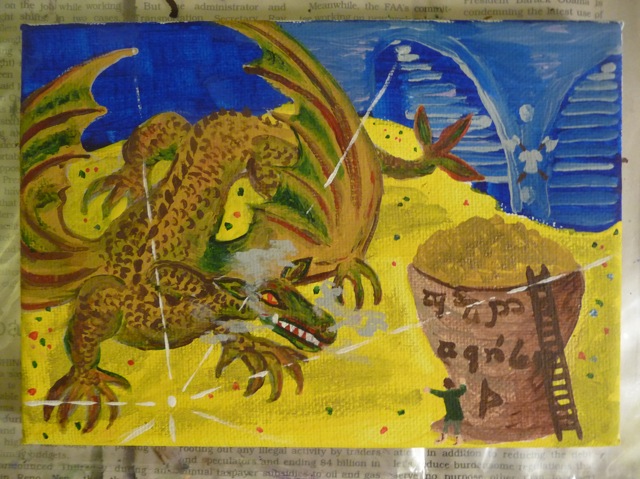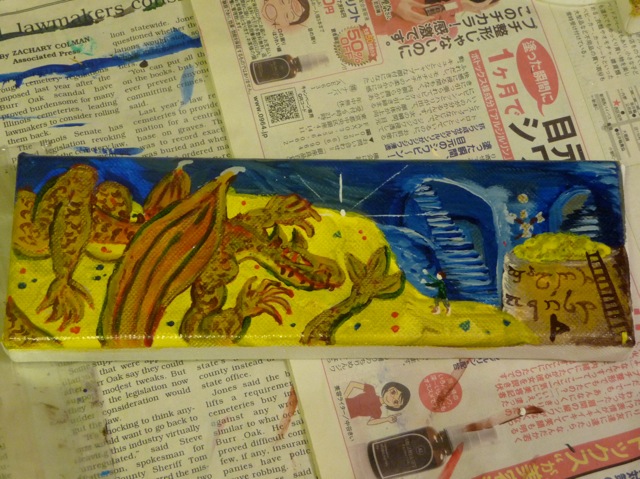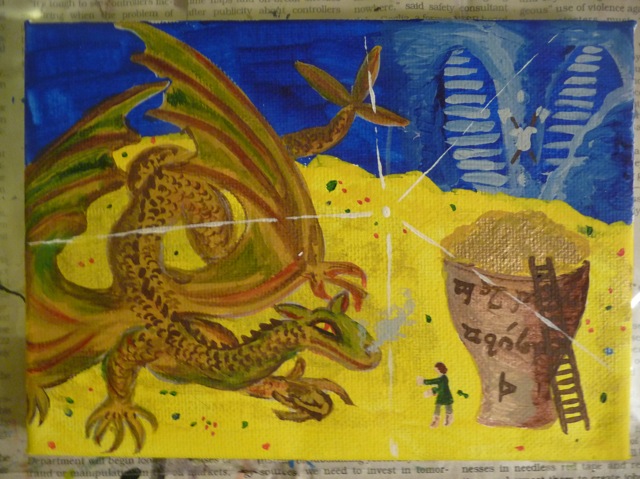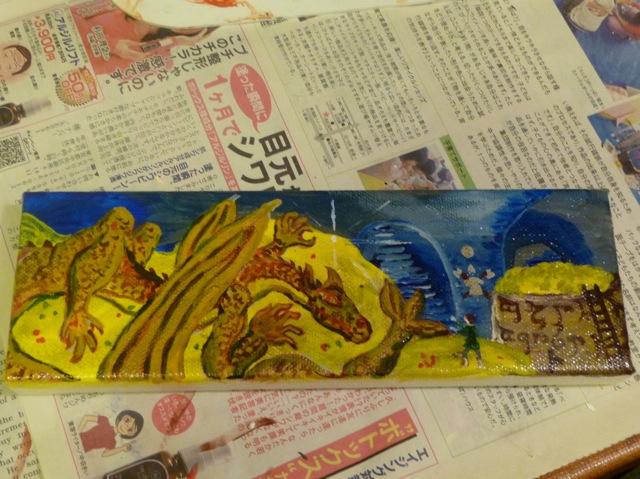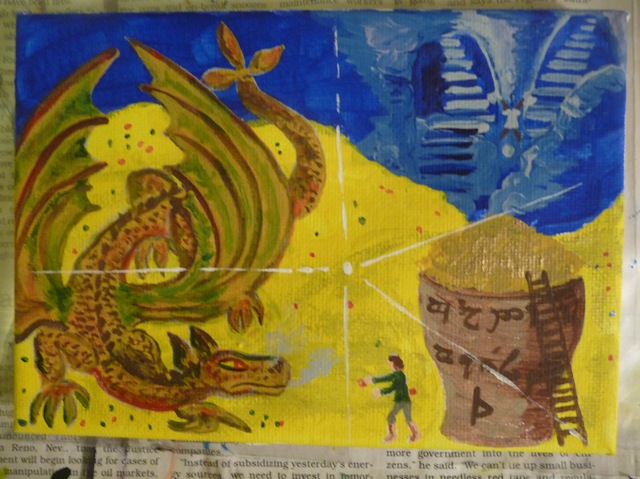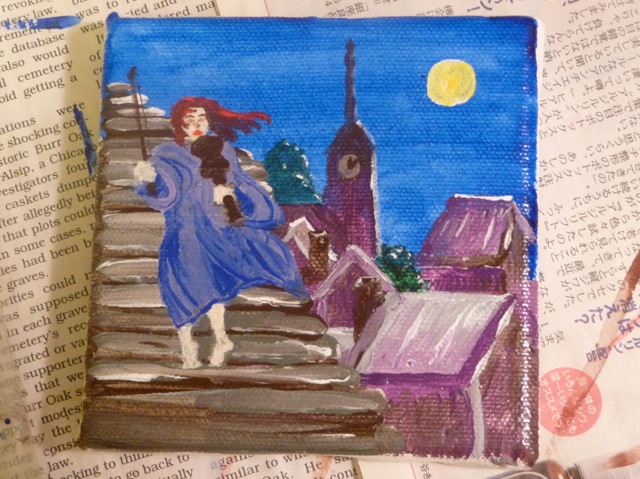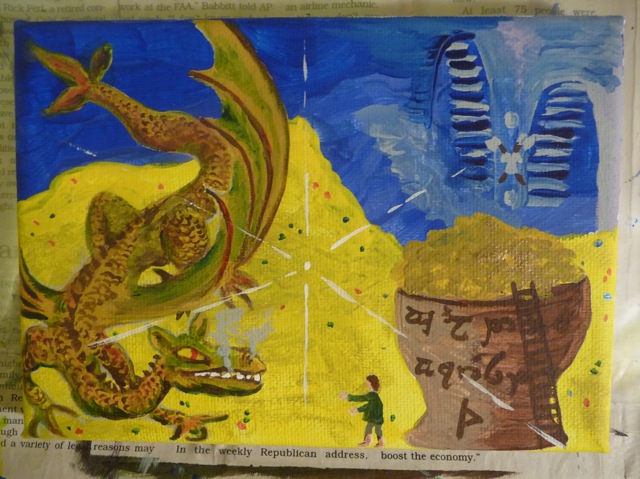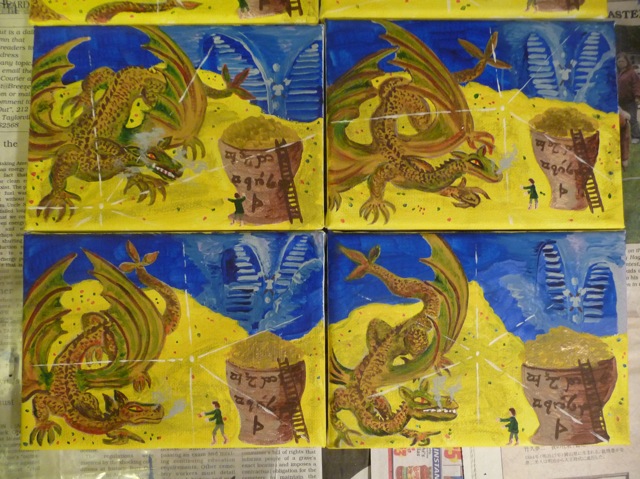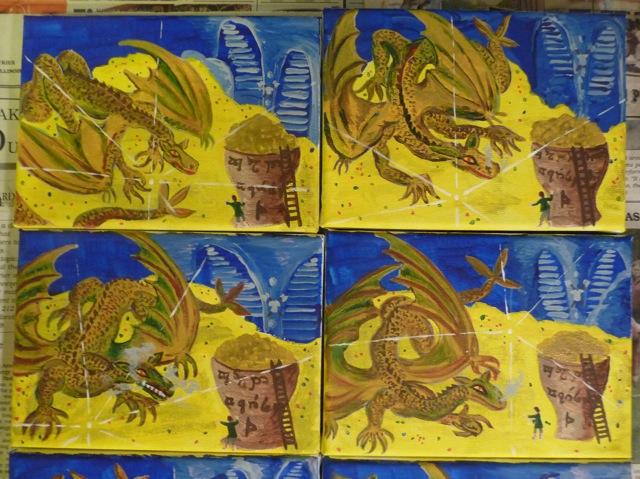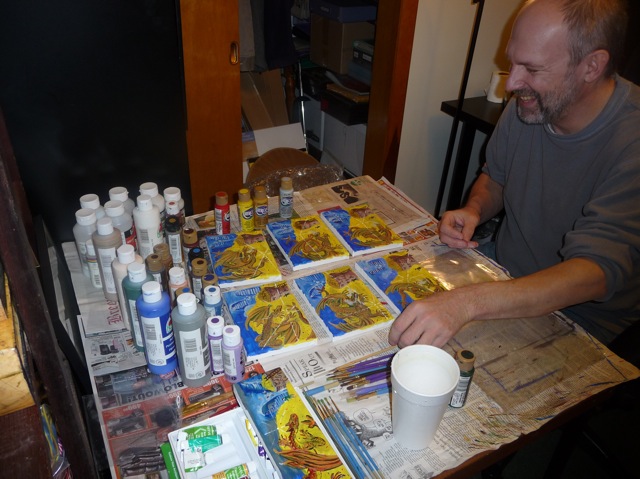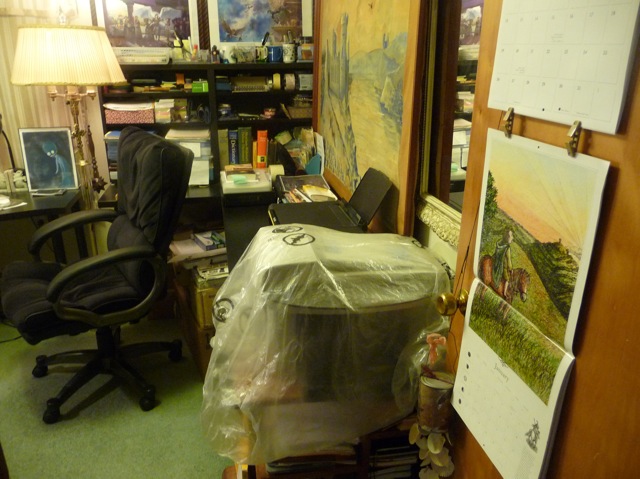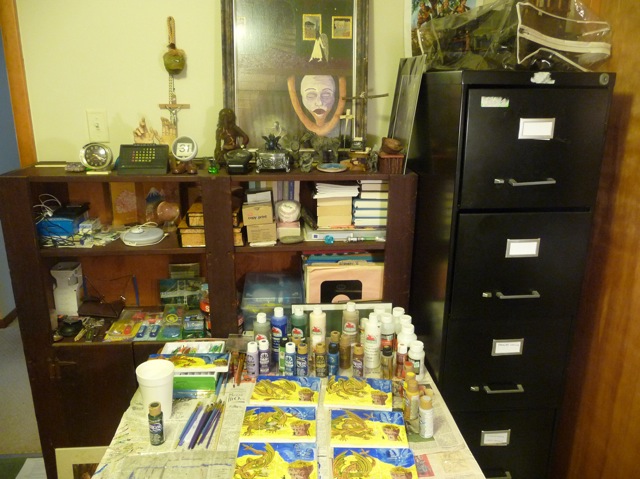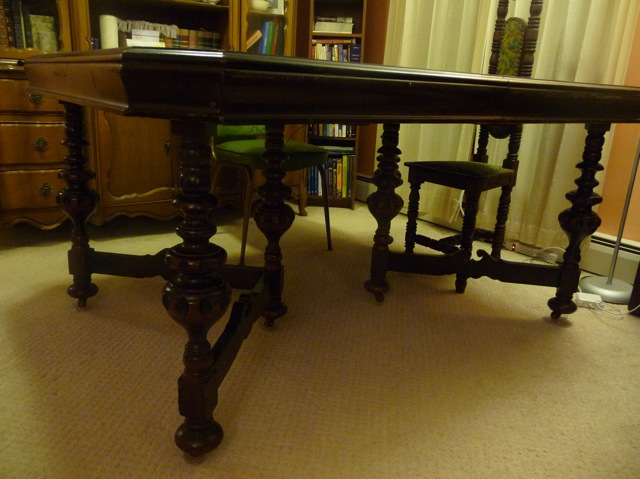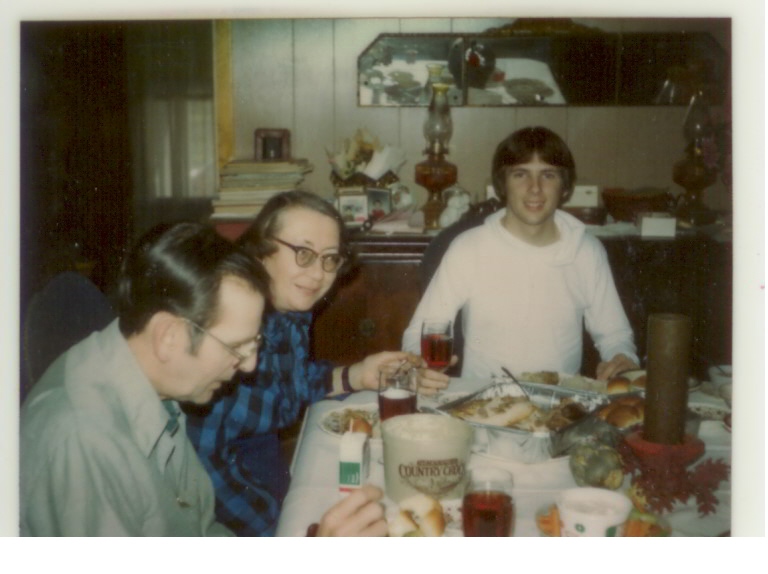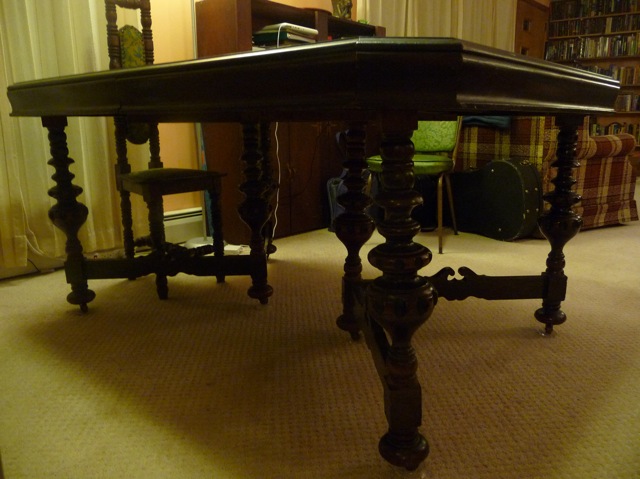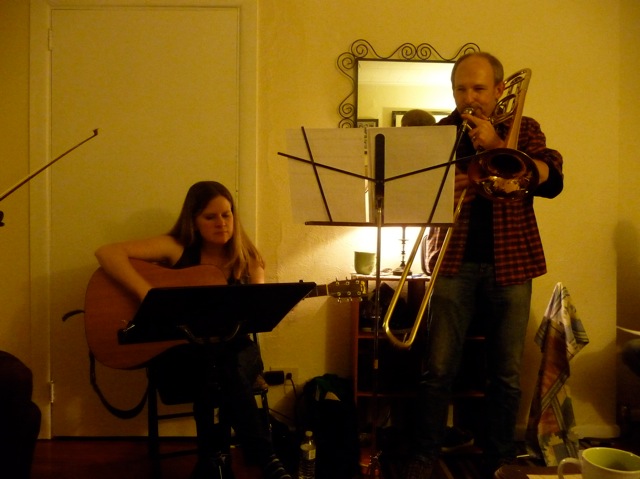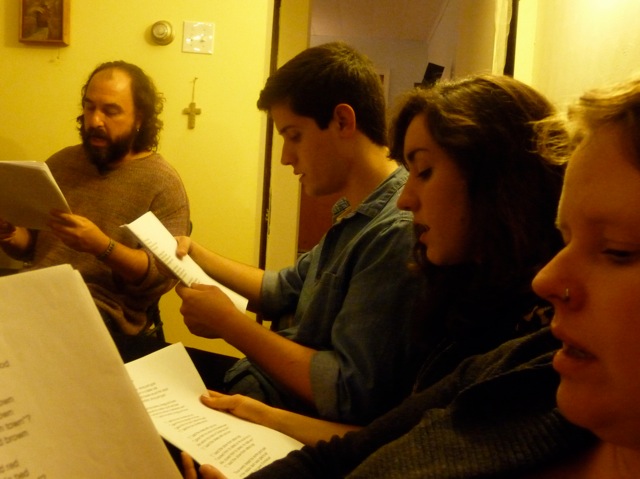Once in awhile I have a dream that is not only vivid, but also so complete in the story it tells that I spring out of bed and scramble for paper and a pen to write down the details before they vanish in the morning light. This is one such, that I dreamed on the night of February 14th (or early on the 15th) — Valentine’s Day, and a night of the full moon.
As with most of my dreams, this one was rich with colors. Interestingly, I had no sense of being myself in it. There was nothing about the “I” in the dream that was particularly F.S.D. — rather, I was a character in it, though I was certainly experiencing everything from the perspective of that character, seeing through his eyes, feeling what he felt. I was sort of an Everyman.
As it began, I was coming home from a big outdoor picnic, cutting across a rolling landscape of grass and occasional thickets and bushes. The setting was not any place I recognized from real life. The greens were very green; the light had that rose-purple glow of the evening, when the sun is low, all pastoral and peaceful.
Looking over my shoulder, I realized a gorgosaurus was chasing me. It was running, shaking the ground with its footfalls, bounding over the hedges, rapidly gaining on me.

Gorgosaurus: I looked it up the next day, and my dreaming mind’s identification of it was right: in the Tyrannosaur family, but a little smaller. It’s amazing how the mind files these things away — I hadn’t thought about gorgosaurs in years!
I could tell that the dinosaur was determined to eat me, so I ran as hard as I could away from it. I dodged right and left, trying to find shelter, trying to find a copse of trees big enough that I might escape into them and somehow elude the predator. But nothing worked. I would duck behind a bush, and the monster would step over the obstacle or crash through it, massive jaws slamming on branches, tearing the foliage apart in its hunt for me. I searched for small, narrow openings between trunks or stems that I might crawl into as if diving into a mouse hole, but I found none.
There was the desperate awareness that the beast was closer at every step. I remember that the gorgosaur kept sniffing me out. I would circle behind a tree, and it would follow my trail like a bloodhound, huge nostrils snuffling. My sides ached from running . . . I was out of breath . . . but the creature was relentless. I tried skirting clockwise . . . counter-clockwise . . . always, the monster would anticipate my tactics or smell me.
Strangely, there was also an indication of wicked intelligence in the reptilian eyes. When I had nowhere to hide, when my exhausted steps began to drag and the next hedge was hundreds of feet away, the gorgosaur would also slow to a stroll, watching me, closing the distance at a leisurely pace.
In the distance, I saw a community, a suburban neighborhood, with houses and streets. With a final sprint, I reached it, the saurian hot on my trail.
This was all intensely vivid. Recall the scariest scenes from Jurassic Park — it was like those, only worse, because I was “living” it. A towering carnivore was racing along behind me, doing its best to catch and devour me.
It was a still hour of the day as evening approached. No one was out in yards or on the streets. I had no more success evading the monster here than in the meadows. We circled among the houses, angled across yards . . . I wriggled over fences, and the gorgosaur smashed through them.
At last I saw a hospital (or maybe a retirement home) with a glass door sure to be unlocked. I staggered up the concrete drive, yanked the door open, and tumbled inside, fighting for breath. I felt safe, but I kept glimpsing the creature through windows — flickers of a massive tail, an elephantine haunch . . .
But then I could no longer see the dinosaur. It must have circled, I supposed, and was watching for me to come out somewhere. This was one of the eeriest moments of the dream. I sensed the thing nearby . . . I could feel it waiting . . . relentless . . . inevitable . . . I knew a wall would buckle inward at any second. I knew I would be faced with a colossal predator, shrugging concrete chunks and shattered girders. But all was silent, like the eye of the hurricane.
Now for the first time since leaving the picnic, I saw people — patients in pajamas, walking the halls — orderlies in uniforms. Someone was about to step outside, and I began urgently warning everyone about the gorgosaurus.
At first, the people reacted with surprise, then alarm. An orderly helped me keep everyone indoors and move them away from the entrance. But rather quickly, the prevailing attitude turned to mockery. “A dinosaur?” someone asked. “Hey, Bob, we’re hiding from a dinosaur!” The whole group of bathrobe-clad patients were laughing, leaning on crutches, slapping their walking casts in derision, and the orderly joined them. [I’m not sure if it’s important, but these were all men, the orderly and the patients. There were no women at all in the dream.]
But as I peeped out through some closed Venetian blinds, I saw the gorgosaur again! “Look!” I shouted, pointing. “Don’t you see that? That huge green thing right outside?”
Now, I kid you not, this is what a patient in my dream actually said in response to that — I am not making this up! The patient, a world-weary old guy in a wheelchair, lifted a corner of the blinds and said, “Hey! I do see something big and green out there!”
“You do?” I asked.
“Yep,” he said. “It’s a John Deere!” And everyone burst out laughing all the harder.
Then the other people ceased to be an important part. I think they were still present, but my full attention was drawn to the gorgosaur. It crouched in the front drive and pushed its enormous head right up to the window and began licking the glass. I knew the glass could not possibly keep out something that huge and powerful. I knew we were doomed.
The creature pushed its snout against the pane, and instead of breaking, the glass became like cellophane, stretching inward, the mighty snout thrusting into the room, then the head. Then all barriers fell aside, and the monster was in the building with us, and the beast was still gigantic, but somehow it could stand up inside and lash its tail and run toward me.
At this point, I was too tired to run any more, and I was convinced fleeing was pointless. The gorgosaur would catch me. I had found the only shelter I could, and it was ineffectual. The monster would follow me everywhere I chose to go. There was no escape. So, resigned to my fate, I decided to meet the creature head-on. Instead of darting into what seemed a gymnasium, I did an about-face and charged straight into the stretching forearm claws, straight into the gaping maw. I felt the right claw seize my left wrist. I felt the hot blast of the creature’s breath.
And the creature closed its jaws and smiled. The saurian lips stretched endlessly back into a wide, wide grin.
Then it began to communicate with me. I didn’t hear a voice, exactly, but I knew its thoughts. Essentially, it said to me, “Good game!”
Essentially, I answered, “Huh?!”
“When I went extinct,” the gorgosaurus said, “I begged for the chance to come back sometimes, even when the world changed, and evoke the terror I once did. I chose you as my victim. This was fun — well played!”
Then the grip was gone from my arm, the hospital was gone, and the dinosaur had vanished. I was alone in the gentle, grassy meadow where the dream had started. When my mind had caught up, when I had caught my breath and could walk again, I trudged on my way. But the grasslands felt a little different now. The darkening red-purple light seemed ominous, the sunset’s gold less trustworthy. Now I knew it to be a world in which the ghost of a gorgosaurus might follow you home from a picnic.
And there you have it — that’s the way I dreamed it.
I was telling Julie all about it the next morning, and we noted how the old “theology of October” comes through there. When the dinosaur went extinct, he asked if he could haunt the world for the purpose of evoking the old fear, and he was granted permission.


